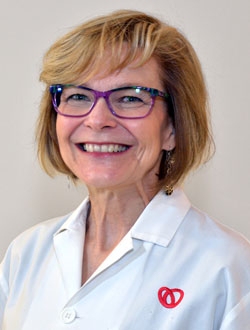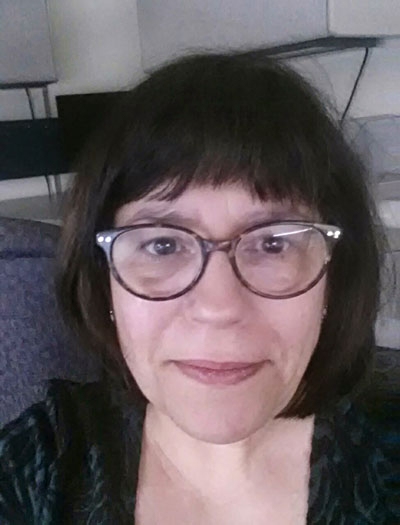
Eighteen – it’s a tough age. Leaving the safe confines of high school for the wider world, starting post-secondary education or work, maybe moving away from your family to do so. Continuing with the adolescent task of figuring out who you are in the world, what you believe, what you want to do, how you want to live.
For newly minted adults who were born with a congenital heart defect, there’s an additional transition to make. It’s time to leave the familiarity of pediatric care for the different world of care as an adult.
This transition from pediatric to adult congenital care is a relatively new concern. Years ago, children born with congenital heart defects rarely made it to adulthood. Then, starting in the 1970s, medical and surgical advances changed the game. Now, 90% of such children live long and healthy lives. The problem is that as many as a quarter of them are lost to follow-up in that transition to adult care.
The reasons are varied. Sometimes a patient will feel fine and not see the need for continuing to receive care. Sometimes, like many youths, they feel invincible. They may not be ready to take on their own care from their parents. Or there can be reasons that have nothing to do with their health and more to do with the rest of their lives. Patients whose home lives are in flux or are experiencing disharmony at home – maybe because their parents have broken up, or there’s instability – are more likely to be lost to follow-up.
In eastern Ontario, the transition to adult care happens between the Children’s Hospital of Eastern Ontario (CHEO) and the Adult Congenital Heart Disease (ACHD) Clinic at the Ottawa Heart Institute.
Helping Every Patient Make the Transition

It can be hard to know which patients will show up at the Heart Institute and which won’t pursue care. That’s why Lynne Lynch, care facilitator at CHEO, and Joanne Morin, advanced practice nurse for the ACHD Clinic, flag not only vulnerable patients, but work to ensure each patient makes the transition.
Some 100 patients move to the ACHD Clinic each year. Many of them have minor conditions that only require monitoring, while others have more complex conditions. Either way, said Lynch, “You don’t want them to fall through the cracks.”
The process of preparing patients for transition starts early, when they are 14 or 15 years old, depending on their readiness, she explained.
The first step is encouraging them to understand their condition and what it requires. For all of their lives, their parents have managed their healthcare, making appointments, getting them there, making sure they have, and take, their medications and have all the necessary tests done. But, Lynch pointed out, “Mom and Dad won’t always be there.” It’s important to prepare patients for managing their own care.
With all the preparation in the world, though, Lynch still described the moment of parting as “a breakup.” It’s leaving a place and people who have been part of their lives for as long as they can remember, a place that’s small in scale and familiar.
The Nuts and Bolts of Making the Switch
When it’s transition time, the patient has a final appointment at CHEO, a full round of tests and leaves with all the contact information for the ACHD clinic—but they need it because the clinic will already have contacted them. If patients are moving out of the province, CHEO and the ACHD clinic will work together to make sure the patient has a referral to a local centre wherever they are going.
If they’re staying in Ottawa, that’s when Joanne Morin steps into the picture. On her side, preparing for the transition starts as soon as she gets an alert from CHEO that a patient is transferring over. She gets a comprehensive package, with all the necessary background information. Her first step is to get in touch with the patient to set up an initial appointment.

Even that can be challenging, though. One of the biggest differences between pediatric and adult care, said Morin, is that, because of privacy laws, all contact must be with the patient, unless the patient explicitly consents to reaching out to parents.
It’s a balancing act, she said. On the one hand, the Heart Institute provides patient-centred care. This is a subtle, but important shift from the family-centred care at CHEO. On the other hand, it’s important to realize that families do not suddenly bow out of the picture.
“You can’t separate patients and families at this point,” said Morin.
Also, depending on the severity and complexity of the heart defect, the first medical appointment can be a year or more away. That’s a long time to wait and a real problem when it comes to losing patients to follow up. Morin always suggests coming in to meet with her, see the clinic and get oriented to the new system long before the first medical appointment.
Different Age, Different Experiences, Different Priorities
CHEO, Morin noted, has everything in one little pod—medical offices, testing facilities, access to other health professionals. At the Heart Institute, it’s more complicated, as various services are located throughout the Institute.
Patients are also dealing with adult issues now—as Morin put it, “Sex, drugs and rock ‘n roll, and how many tattoos can I have?” Lynch added that while youth will do what they want, it’s important to establish a relationship of trust to be able to provide some guidance.
One of the challenges the clinic faces is how to communicate with a generation that generally doesn’t have a landline and rarely uses cell phones to actually make or receive phone calls. Their prefer texting.
“We’re behind the times in the way we communicate with younger patients,” admitted Morin. Nonetheless, she added that the clinic is working to reach patients through the channels that work for them, and she and Lynch will continue to smooth the sometimes rocky transition to adult care.

